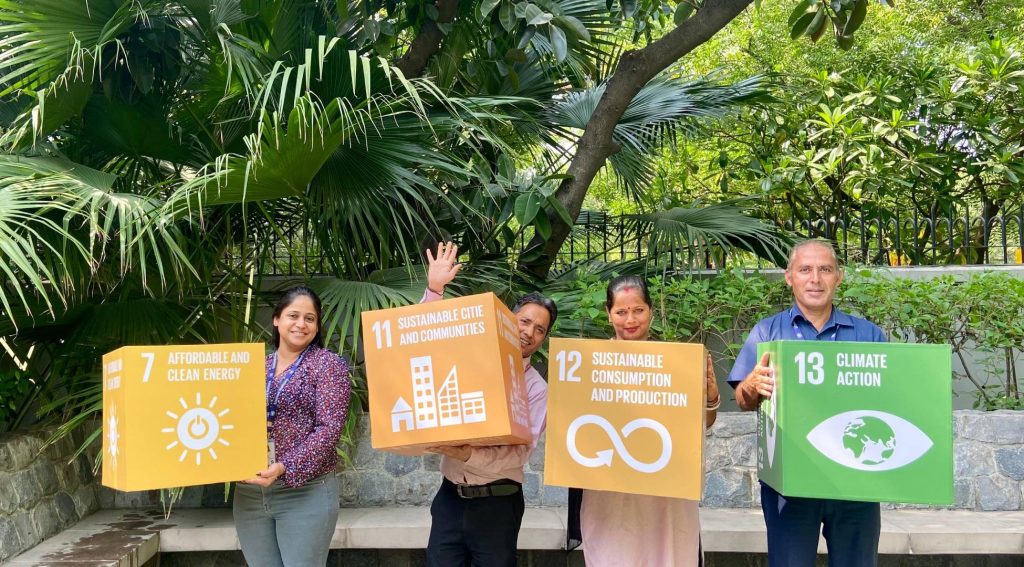UNDP India has reduced its environmental footprint and set a new standard for sustainability in the Asia-Pacific region through its ambitious UNDP Greening Moonshot effort.
The transformation:
Since 2017, the New Delhi office has reduced its energy consumption by 48%, positioning it as the top performer in the region for carbon savings.
UNDP India’s sustainability strategy prioritizes long-term strategic retrofits.
Central to these efforts is a 174 kWp solar photovoltaic plant located on the UN House rooftop, which generates renewable energy. The solar power now supplies a substantial portion of the office’s daily operations, such as air conditioning, appliances, and lighting, thereby significantly decreasing reliance on fossil fuels and aligning operations with international climate objectives.
The building has undergone extensive upgrades, incorporating new energy-efficient chillers and HVAC systems designed for reduced power consumption.
Advanced air handling units and modulating valves regulate airflow for optimized energy use. Heat-reflective tiles, XPS insulation, and double-glazed windows have decreased heat gain by over 40%, which contributes to enhanced indoor comfort and lower cooling requirements. A real-time energy monitoring system provides data that informs decisions regarding HVAC settings and electric vehicle charging.
Additionally, smart LED lighting integrated with motion sensors contributes to waste reduction.
Circular workplace:
Beyond energy and mobility, the organization demonstrates a commitment to a circular workplace through its waste management practices.
This includes the responsible recycling of electronic waste, repurposing of organic waste, and the transformation of discarded paper into new notepads. HEPA-filtered hand dryers have replaced paper towels, and there are plans to introduce new dispensers made from 100% recycled materials, all with the goal of minimizing environmental impact, UNDP India said in a statement.
Another essential component of the plan is water conservation. Half of the yearly rainfall is collected and replenished by a rainwater collection system. Upgraded cooling towers would also save energy and water, with estimates indicating a 5% reduction in electricity requirements and a 15% reduction in groundwater use.
Regarding mobility, the office operates a growing fleet of four electric and one hybrid vehicle for daily operations. These vehicles are powered by the rooftop solar carport. This initiative aims to reduce emissions at the source and provides a tangible example of a transition towards cleaner transportation.
The way forward:
The organization continues to invest in a new building management system. The system aims to automate energy optimization, enhance HVAC efficiency, and facilitate predictive maintenance. An ongoing energy audit will identify additional areas for performance improvement.
In recognition of the carbon footprint associated with travel, UNDP India has implemented a new Green Travel Policy. This policy promotes strategies such as consolidating official trips, utilizing virtual meetings, and prioritizing low-emission transportation options.
“Through these collective efforts under the Greening Moonshot initiative, UNDP India is not just advocating sustainability; it is living it,” says Angela Lusigi, Resident Representative, UNDP India. “From solar-powered operations and electric mobility to responsible waste and water practices, we are turning ambition into action and operations into inspiration.”












